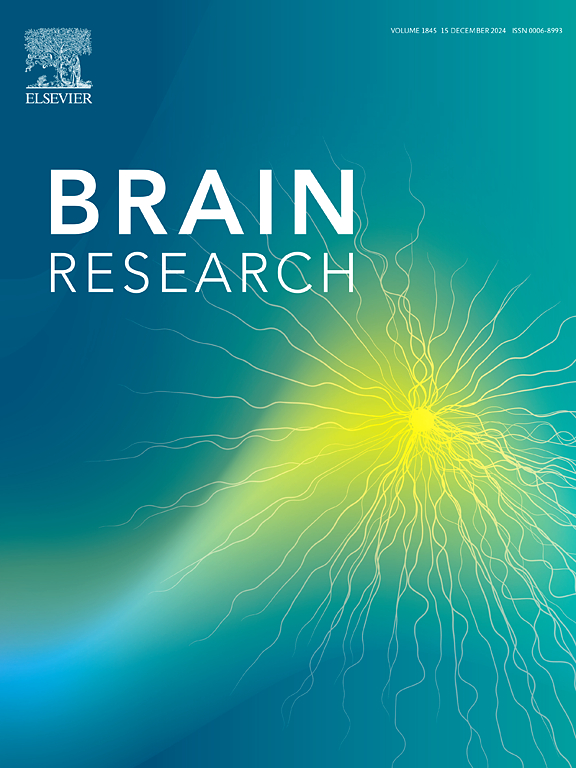Potential molecular mechanisms of tobacco smoke exposure in Alzheimer’s disease
IF 2.7
4区 医学
Q3 NEUROSCIENCES
引用次数: 0
Abstract
Background
Smoking is detrimental to health, with tobacco use being a critical factor in the development of various neurodegenerative diseases, including Alzheimer’s disease (AD), which progressively impairs brain function and poses a significant threat to public health. This study aims to examine the potential genetic alterations induced by smoking that are associated with AD and to investigate the underlying regulatory mechanisms. The research will provide theoretical foundations for targeted prevention and treatment strategies for AD.
Methods
This study analyzed datasets from the Gene Expression Omnibus (GEO) and the Comparative Toxicogenomics Database (CTD) to identify genes affected by tobacco smoke exposure and those altered in patients with AD relative to normal controls. We conducted Gene Ontology (GO) and Kyoto Encyclopedia of Genes and Genomes (KEGG) enrichment analyses using OmicShare tools to screen for key pathways. Key genes were identified by constructing protein–protein interaction networks (PPI) in the STRING database with the aid of CytoHubba. Additionally, the binding activity of the proteins encoded by these key genes to nicotine, the main component of tobacco, was analyzed using molecular docking techniques. Finally, the analytical results were verified using Quantitative Real-Time Polymerase Chain Reaction.
Results
The CTD identified 12,164 CE-related genes affected by tobacco smoke exposure. A comparison of these datasets yielded 94 common genes that were both influenced by tobacco and differentially expressed across all brain regions. The GO and KEGG pathway enrichment analyses showed that these common differentially expressed genes (DEGs) were predominantly enriched in the Wnt/β-catenin and PI3K-AKT signaling pathways. The DEGs’ PPI network, constructed using the STRING database, highlighted key genes such as HSP90AB1, SOS2, MAGI1, and YWHAZ. Molecular docking studies demonstrated that nicotine binds effectively to the protein structures of these key genes, primarily through amino acid residues such as Ser and Glu. Experimental validation showed that HSP90AB1 and YWHAZ exhibited notable expression discrepancies under varying concentrations of cigarette smoke extract (CSE) treatments, particularly demonstrating a pronounced down-regulation trend at elevated concentrations.
Conclusion
The study indicates that tobacco may impact the function of transmembrane transporter proteins and contribute to the development of AD by affecting key genes such as HSP90AB1 and YWHAZ, as well as signaling pathways like PI3K-AKT.

阿尔茨海默病中烟草烟雾暴露的潜在分子机制。
背景:吸烟有害健康,烟草使用是各种神经退行性疾病发展的关键因素,包括阿尔茨海默病(AD),它逐渐损害脑功能并对公众健康构成重大威胁。本研究旨在研究吸烟引起的与阿尔茨海默病相关的潜在基因改变,并探讨潜在的调节机制。本研究将为制定针对性的AD防治策略提供理论依据。方法:本研究分析基因表达综合数据库(Gene Expression Omnibus, GEO)和比较毒物基因组数据库(Comparative Toxicogenomics Database, CTD)的数据集,以确定受烟草烟雾暴露影响的基因,以及AD患者相对于正常对照组的基因改变。我们使用OmicShare工具进行了基因本体(GO)和京都基因与基因组百科全书(KEGG)富集分析,以筛选关键通路。利用CytoHubba在STRING数据库中构建蛋白-蛋白相互作用网络(protein-protein interaction networks, PPI),鉴定关键基因。此外,利用分子对接技术分析了这些关键基因编码的蛋白对烟草主要成分尼古丁的结合活性。最后,使用实时定量聚合酶链反应对分析结果进行验证。结果:CTD鉴定出12164个受烟草烟雾暴露影响的ce相关基因。对这些数据集的比较得出了94个共同基因,这些基因既受烟草影响,又在所有大脑区域中表达差异。GO和KEGG通路富集分析显示,这些共同差异表达基因(DEGs)主要富集于Wnt/β-catenin和PI3K-AKT信号通路。DEGs的PPI网络使用STRING数据库构建,突出了HSP90AB1、SOS2、MAGI1和YWHAZ等关键基因。分子对接研究表明,尼古丁主要通过Ser和Glu等氨基酸残基与这些关键基因的蛋白质结构有效结合。实验验证表明,HSP90AB1和YWHAZ在不同浓度的香烟烟雾提取物(CSE)处理下表现出显著的表达差异,特别是在浓度升高时表现出明显的下调趋势。结论:本研究提示烟草可能通过影响HSP90AB1、YWHAZ等关键基因以及PI3K-AKT等信号通路,影响跨膜转运蛋白的功能,促进AD的发生发展。
本文章由计算机程序翻译,如有差异,请以英文原文为准。
求助全文
约1分钟内获得全文
求助全文
来源期刊

Brain Research
医学-神经科学
CiteScore
5.90
自引率
3.40%
发文量
268
审稿时长
47 days
期刊介绍:
An international multidisciplinary journal devoted to fundamental research in the brain sciences.
Brain Research publishes papers reporting interdisciplinary investigations of nervous system structure and function that are of general interest to the international community of neuroscientists. As is evident from the journals name, its scope is broad, ranging from cellular and molecular studies through systems neuroscience, cognition and disease. Invited reviews are also published; suggestions for and inquiries about potential reviews are welcomed.
With the appearance of the final issue of the 2011 subscription, Vol. 67/1-2 (24 June 2011), Brain Research Reviews has ceased publication as a distinct journal separate from Brain Research. Review articles accepted for Brain Research are now published in that journal.
 求助内容:
求助内容: 应助结果提醒方式:
应助结果提醒方式:


